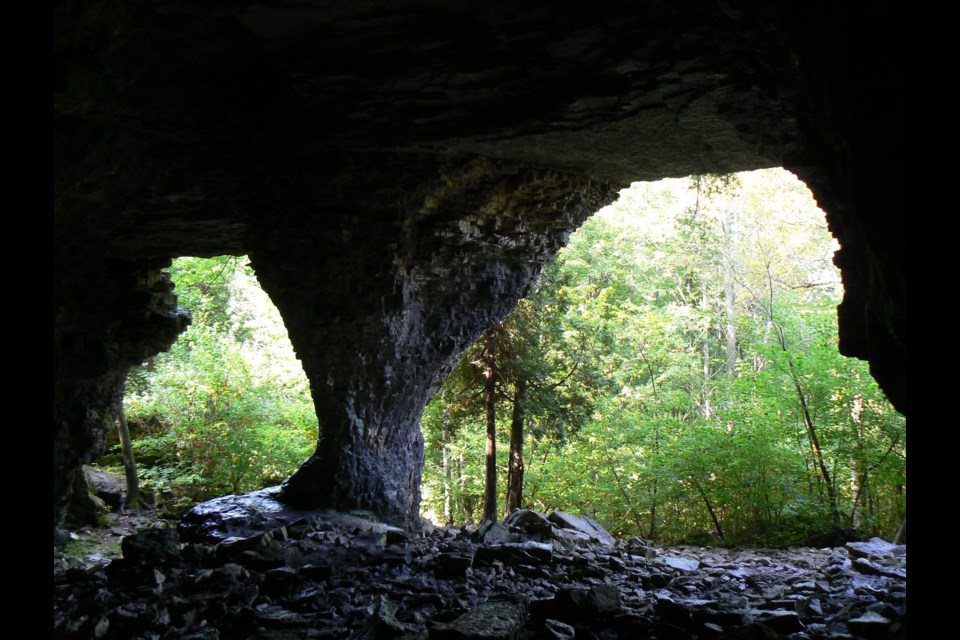Where should we go next?
That’s the question you often ask yourself when planning weekend adventures. With soaring gas prices, now more than ever we are seeking destinations close to home.
Point your car toward Wiarton and Bruce’s Caves Conservation Area.
A collection of caverns and hollows in the Niagara Escarpment cliffs, Bruce’s Caves are an impressive natural feature, with their gaping mouths leading into shadowy recesses. But more than that, the caves serve as an illustration of ancient lake levels and how they shaped the modern landscape.
Prehistoric Lake Algonquin covered most of the area encompassed by today’s upper Great Lakes — Superior, Michigan and Huron. Filled with meltwater from the receding glaciers, it was much deeper than the modern lakes; the waterline was about halfway up the escarpment’s cliffs. The action of waves on ancient Lake Algonquin repeatedly crashing against the shore slowly eroded the rock and, over time, formed Bruce’s Caves. Estimates are the caves are about 12,000 years old.
Robert Bruce, after whom the caves were named, was born on the Orkney Islands, Scotland, around 1820. A soldier in the Scots Guards, he deserted at the outbreak of the Crimean War in 1854 and sought refuge in Canada, where he settled on a wooded, 300-acre lot in Wiarton.
Bruce was a recluse who lived the life of a hermit. For a few years, he worked in railway construction gangs during the summer, then paid to lodge in the local jail over the winter. But for most of his remaining years, Bruce lived in a modest cabin at the entrance to the caves and supported himself by charging admission to curious visitors.
Bruce’s property is now protected by the Grey Sauble Conservation Authority. The main attraction is an enormous cave with a distinctive double arch at its entrance. Against the back wall of this cave, a crack in the rocks offers a peek into an inaccessible second cave. Many other caves — some large enough to walk through, others mere crevices in the rock — can be found along the escarpment face on both sides of the main cave.
The hike from the parking lot to the caves is short and easy, making Bruce’s Caves an ideal family day trip destination.
All you need to visit is a good pair of hiking shoes, perhaps a flashlight, and, above all, a sense of adventure.
Bruce’s Caves Conservation Area is located off Grey Road 1, just east of Wiarton.
More information can be found at greysauble.on.ca.



